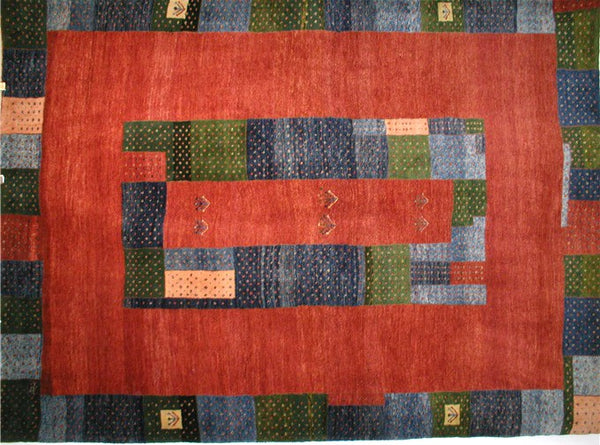Tribal Rugs of Today
The art and craft of the tribal knotted pile carpet probably began among the pastoral nomads or herding people of central Asia who moved their sheep or goats between winter quarters and summer pasture. Their livelihoods were centered around their animals, and the items they made from their wool were absolutely essential to their lives: the walls of their tents, ropes, bags and containers of all sorts, rugs for the floor, clothing, and a variety of household items. The weaving of these things was also a medium for artistic expression and they lent so much color and beauty to the everyday lives of these nomadic people.
The first tribal piled rugs or carpets may have imitated the texture and insulating properties of animal pelts. The oldest complete carpet was found in the frozen tomb of a nomadic chieftain at Pazyryk in southern Siberia. It has been dated to the 5th century B.C. and can be seen in the Hermitage Museum in St. Petersburg.
Many of the nomadic people have settled down over the centuries, and the longer they've been settled, the more diluted by other influences the designs have become. This has also been because of the migrations of peoples due to political upheavals all over the world.

The term "tribal" used with rugs refers mainly to weavings made for personal use within a community. As nomadic peoples settled down, rug weaving became more of a cottage industry and rugs started to be produced as a means of livelihood. As the weavers have become subject to selling pressures, market demand has become such an influence that it has overridden communal tradition.
These "tribal" pieces that we present here in our online store are really in the tribal style: the gabbehs, Balouch soumaks, Qashgai designs, all based on the weaving techniques and designs of the nomadic people of Iran but most probably made in village workshops and cottage weaving industries. With a few exceptions, some of the spontaneity of the antique Persian tribal pieces has surely been lost -- but those exceptions are out there still!


